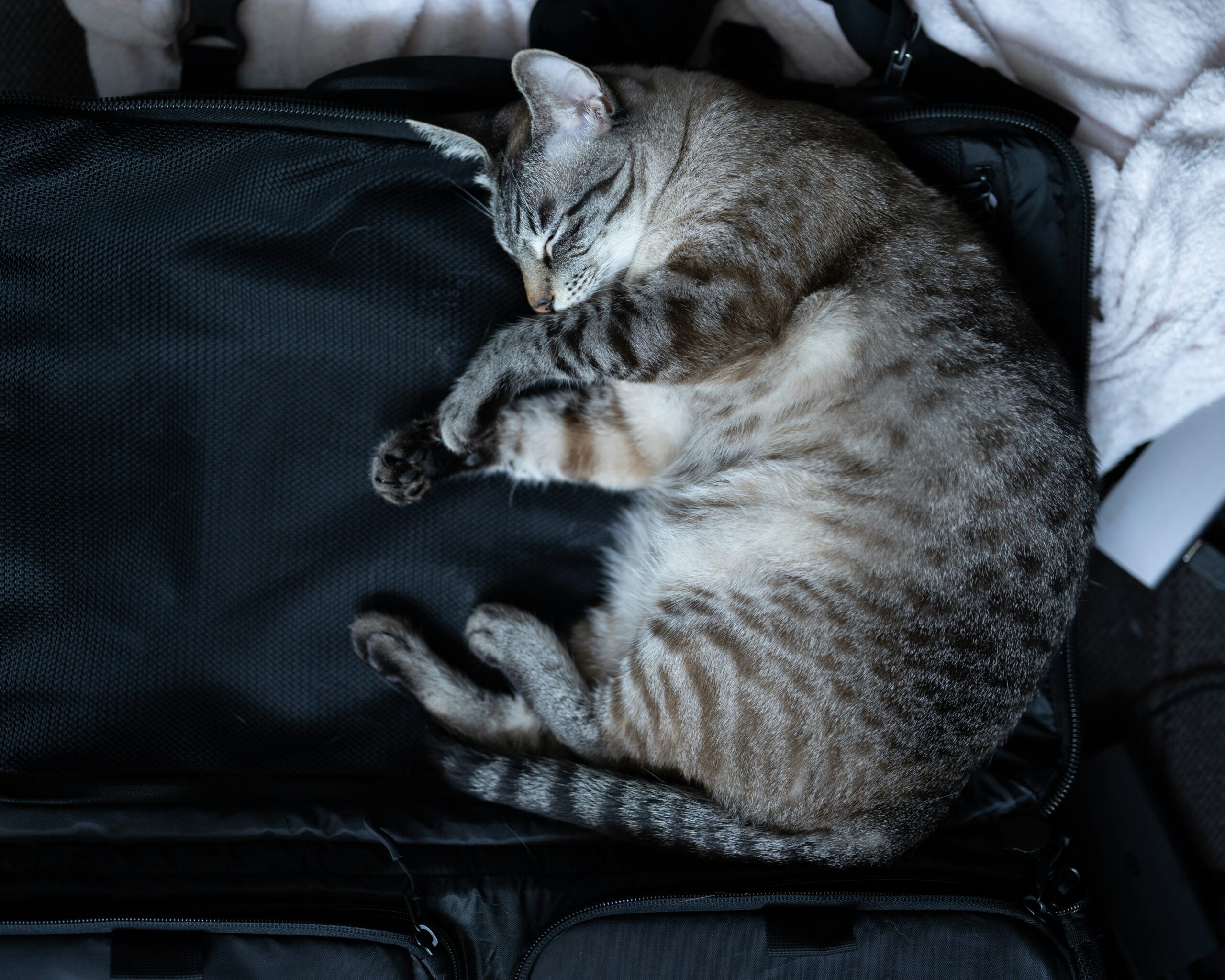Traveling with your cat by air can be a smooth experience with the right preparation. Whether you’re flying to a new home or taking a vacation, knowing the airline rules and some pro tips for flying with cats will make your journey less stressful. This guide will help you navigate airline travel with cats, from choosing the best travel carriers to ensuring your cat’s comfort and safety in the air.
Why Fly with Your Cat?
Flying with your cat may seem intimidating, but it can be a necessity in certain situations. Whether you’re moving to a new country, heading to a vacation spot, or adopting a rescue cat from another area, flying with cats may be the fastest and safest way to get to your destination.
Many airlines offer options for pet travel, but each one has different regulations, so it’s important to plan ahead. Understanding the process and preparing your cat for the journey is key to reducing anxiety for both of you.
Understanding Airline Rules for Cats
Each airline has its own rules when it comes to flying with pets, so it’s essential to check the guidelines of the airline you’re flying with well in advance. Here are the basic things you’ll need to know when traveling by air with your cat:
1. Pet Carrier Requirements
Most airlines require that your cat travel in an approved pet carrier. The carrier must be well-ventilated, secure, and large enough for your cat to stand, turn around, and lie down. Be sure the carrier is labeled with your contact information, and that it fits under the seat in front of you if your cat is traveling in the cabin.
Soft-sided travel carriers are typically better for cabin travel since they’re more flexible and fit easily under airline seats. Hard-sided carriers might be required for cargo travel, depending on the airline and size of your cat.
2. Pet in Cabin or Cargo
Many airlines allow pets to fly in the cabin with you, provided they fit in an approved carrier under the seat. However, if your cat is larger or if the airline doesn’t allow cabin travel, your cat may need to fly in the cargo hold.
If flying in the cabin is not an option, be sure to check the airline’s specific rules for cargo travel, as some airlines have restrictions on the temperature and conditions in the cargo hold, especially for long-haul flights.
3. Health and Documentation
Airlines typically require proof of your cat’s health status. Most will ask for:
- A valid rabies vaccination certificate, especially for international travel.
- A health certificate from your vet, usually issued within 10 days of travel.
- Microchip information (in case of emergency or lost pets).
For international flights, some countries may require specific vaccinations or tests. Check the pet passport regulations for the country you’re flying to, and make sure you have the necessary paperwork.
4. Booking Your Cat’s Flight
Be sure to notify the airline early that you’re traveling with a pet, as many airlines limit the number of pets allowed in the cabin per flight. Pet reservations usually come with an additional fee, which can vary depending on the airline.
5. Age and Size Restrictions
Some airlines have age or size restrictions on flying with pets. For example, they may not allow kittens under 8 weeks old to travel, and they may have weight limits on pets flying in the cabin. Make sure to check the specific airline’s rules before booking your flight.
Pro Tips for Flying with Your Cat
Once you’ve checked the airline’s pet travel policies, it’s time to focus on ensuring your cat has a comfortable, stress-free flight. Here are some pro tips to make the journey easier for your cat:
1. Get Your Cat Used to the Carrier
If your cat isn’t used to traveling in a pet carrier, you’ll want to give them plenty of time to adjust before the flight. Start by introducing the carrier well in advance of your trip. Place treats, toys, and familiar bedding inside the carrier to make it feel like a safe space.
Try to take your cat on shorter car rides with the carrier so they can get accustomed to the sensation of being in it. This will help reduce anxiety when the time comes to travel.
2. Visit the Vet Before You Fly
Before flying with your cat, make sure they are healthy enough for travel. Visit the vet for a checkup and ensure that all vaccinations are up to date. Ask your vet for advice on calming your cat during the flight, especially if your cat experiences travel anxiety.
Some cats may benefit from a mild sedative, but always ask your vet before giving your cat any medication to ensure it’s safe for them.
3. Pack Essential Items
Packing the right essentials can make your cat’s travel more comfortable. Be sure to include:
- Travel litter box: A portable litter box is essential for long flights. Some are collapsible, making them easy to carry in your luggage.
- Travel-friendly cat food: Bring along your cat’s usual food or any travel-friendly cat food that’s easy to serve on the go.
- Water bowls: Ensure that your cat stays hydrated by bringing a spill-proof travel water bowl. Offer water regularly during layovers or breaks.
- Toys and comfort items: Bring along your cat’s favorite toys or a familiar blanket to provide comfort.
- Cleaning supplies: Pack wet wipes or paper towels in case of any messes or accidents during the flight.
4. Arrive Early at the Airport
Arrive at the airport with plenty of time to spare, especially if you’re flying with a pet. You’ll need extra time for check-in, and you may have to go through additional security procedures when traveling with your cat.
Some airports also have special pet relief areas where your cat can stretch their legs before the flight. Check the airport’s website for pet-friendly amenities.
5. Keep Your Cat Calm During the Flight
Once on the plane, keep your cat calm by speaking softly to them and avoiding sudden movements. Many cats find the noise and motion of the plane unsettling, so try to remain as calm and relaxed as possible. Covering the carrier with a light towel or blanket can help create a sense of security and reduce anxiety for your cat.
6. Plan for Layovers and Connecting Flights
If you have a layover or connecting flight, be sure to give your cat a break and offer food, water, and bathroom time during your stop. Pet-friendly airports may have designated areas for your cat to stretch their legs.
Check in with the airline during layovers to ensure everything is going smoothly with your cat’s travel arrangements.
Special Considerations for International Travel
If you’re flying internationally with your cat, there are additional considerations to keep in mind:
- Make sure your cat has a pet passport if required by the destination country.
- Be aware of quarantine regulations and any required vaccinations or health checks.
- Some countries, such as the EU, may have strict regulations for entering with pets, so start the process well in advance of your trip.
Conclusion
Flying with cats requires a bit of preparation, but with the right steps, it can be a smooth and enjoyable experience for both you and your feline companion. From choosing the right pet carrier to ensuring your cat’s comfort and safety during the flight, proper planning is key. Be sure to follow the airline’s pet travel guidelines, and take the necessary steps to ensure your cat stays calm and comfortable during the journey. Safe travels!







